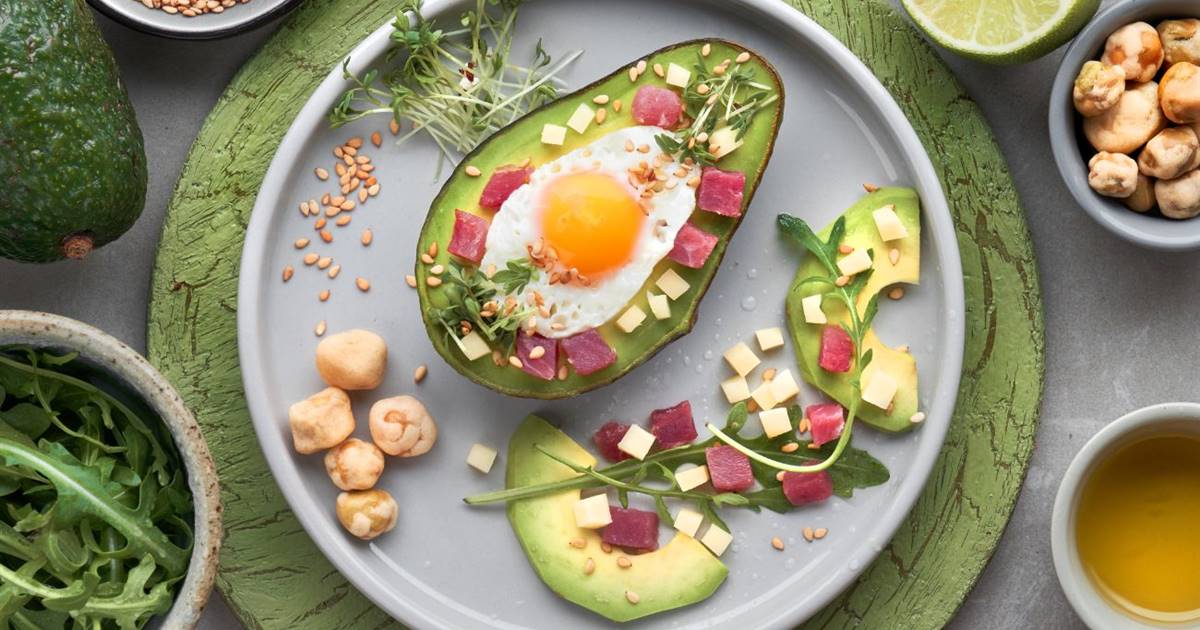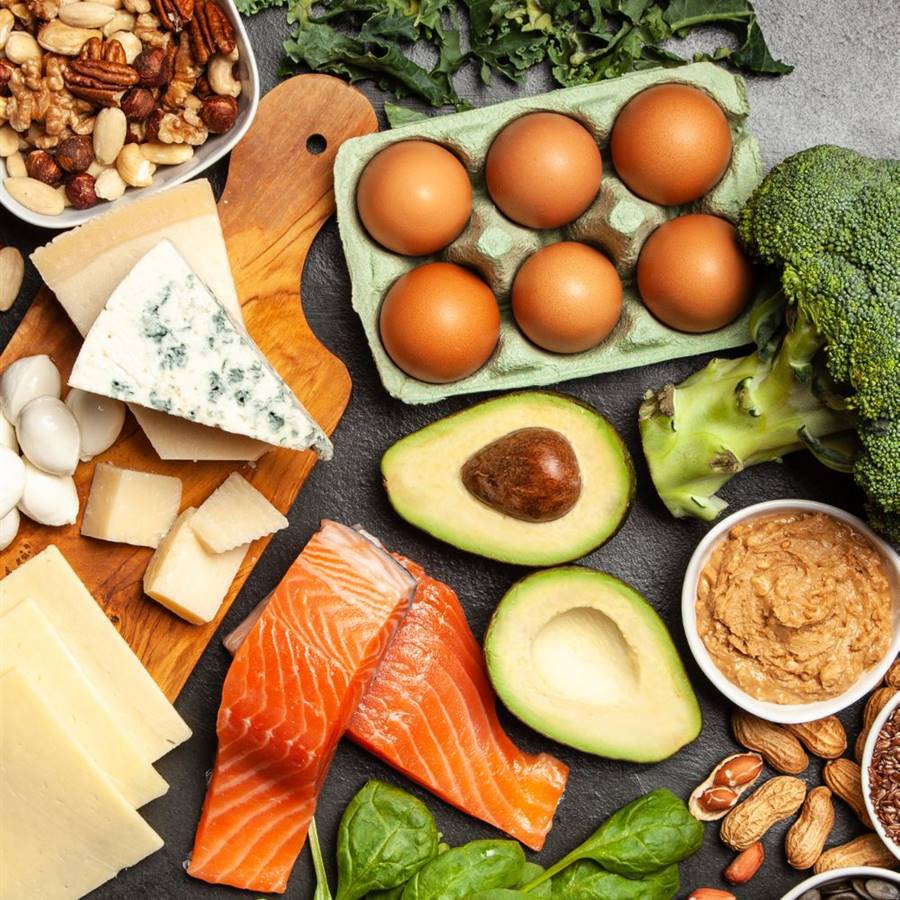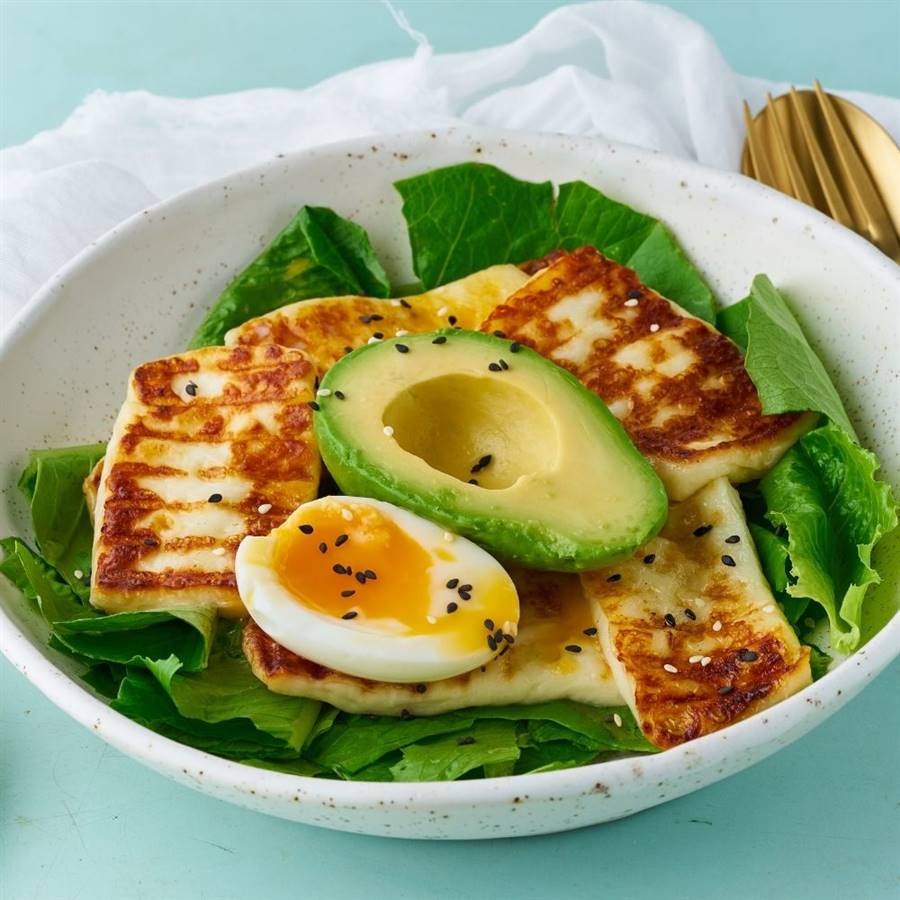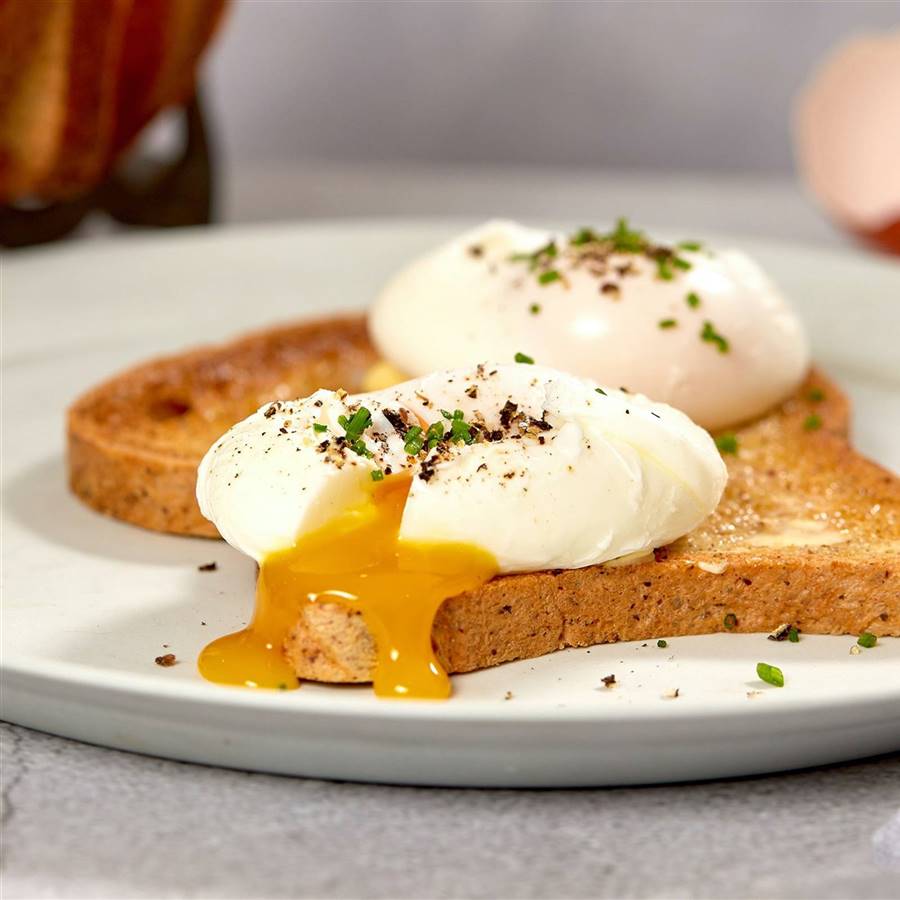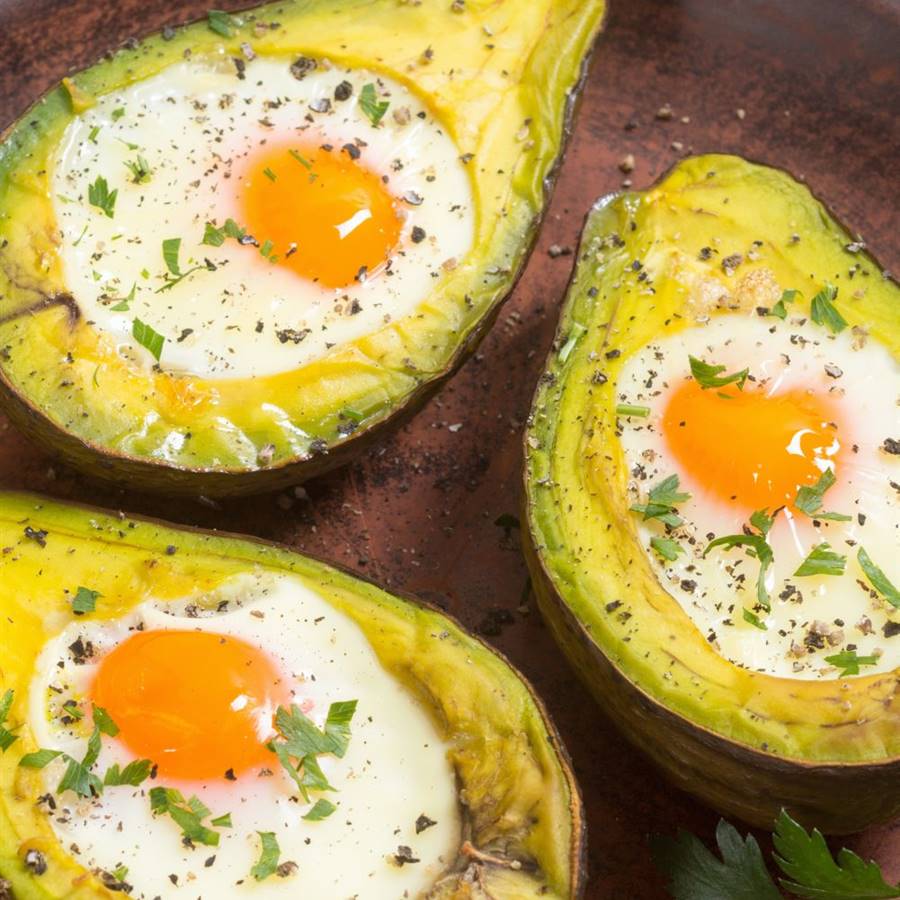The keto or ketogenic diet has become a phenomenon in recent years. Social networks are full of keto recipe ideas, and more and more people are joining this lifestyle. The ketogenic diet, popularly known as the keto diet, was created by the American physician Russell M. Wilder in 1921, and Its objective is to cause ketosis in the body, a process that helps to lose weight and burn fat, among other health benefits.
Is the keto diet really that effective and beneficial? We answer the most frequently asked questions about this diet so that you can understand it easily and quickly.
What is the keto diet?
The keto or ketogenic diet is a diet that It is based on minimizing the intake of carbohydrates and increasing the consumption of healthy fats. The goal of this diet is for the body to stop using carbohydrates as a source of energy and use fats, both from the keto foods eaten and from the body’s own fat reserves.
In a diet where carbohydrates (pasta, rice, legumes, fruits and some vegetables) are the protagonists, the body breaks down these carbohydrates into glucose and uses it as energy. When the base of the diet ceases to be these carbohydrates and becomes healthy fats, the body can no longer use glucose as fuel and turns to fats. It is when the state of ketosis occurs.
What is ketosis and why does it help to lose weight?
Ketosis is a process that the body initiates to seek energy when it lacks carbohydrates or when we fast. It does so by resorting to body fat stores, which are converted to ketones to feed muscles and other tissues instead of glucose. The result is fat burning and faster weight loss.
When entering ketosis, some people may have symptoms of what is known as “keto flu”: tiredness, lack of concentration, irritability, muscle aches, palpitations, stomach discomfort and desire to eat sweets. You can feel all the symptoms, some or none, it depends on the organism of each person. To prevent or alleviate these discomforts, you can add more fat to your diet, drink more water, or exercise. Taking licorice, maca, turmeric, pure cocoa, or hemp seeds can also help.
What should you eat on the keto diet?
On the keto diet, healthy fats should make up three quarters of what we eat. This is the nutritional distribution.
- 70% healthy fats. For a 1,500 kcal diet, it means consuming 125 g of fat. It is approximately four times more than what is recommended in a conventional diet, for example the Mediterranean.
- 20% healthy protein. For the 1,500 kcal diet, the protein content should be 60 g per day. This amount is added, for example, with 120 g of chicken breast and 175 g of hake. It is an amount somewhat higher than that of an ordinary diet.
- 10% carbohydrates. On a 1,500 kcal ketogenic diet, you could only consume about 20-30 g of carbs per day, found in one small apple and one orange. To give you an idea, in the Mediterranean diet the proportion of carbohydrates is 60%.

A keto dish: chicken breast with egg accompanied by a green salad with broccoli, green beans and walnuts.
To reach that amount of fat, it is not worth using just any fat; it has to be healthy. Therefore, bacon, sausages, excess cheeses are left out… Foods with healthy fats are: avocado, nuts, oily fish, olive oil or extra virgin coconut or eggs.
What are the forbidden foods on the keto diet?
- Cereals and their derivatives. Bread, pasta or rice are some of the foods that cannot be consumed on the keto diet. But if you don’t want to deprive yourself of them, there are some alternatives like the famous keto bread.
- Free sugars. The consumption of industrial pastries, sauces or any food rich in sugars is totally prohibited.
- Legumes. They are a source of carbohydrates, so their consumption is not allowed.
- tubers. The potato, carrot, pumpkin or sweet potato contain many carbohydrates. Therefore, its consumption should also be restricted.
- Alcoholic drinks. Alcohol can hinder ketosis, which is why it is prohibited on the keto diet.
What are the foods allowed on the keto diet?
- Meat. Both white and red meat, its contribution of carbohydrates is zero. It is best not to abuse red meat and opt for chicken, turkey or rabbit.
- Fish and seafood. Most fish and shellfish are suitable for the keto diet. Those with the highest fat content are salmon, sardines or tuna.
- Eggs. It is the star food for its high protein content and its low caloric intake. In addition, they are very satiating.
- Whole dairy. Yogurts, kefir, cheeses…, whole, without skimming. You can also have butter in moderation or ghee.
- Nuts. They are a great source of healthy fat. It is the perfect accompaniment to keto recipes.
- Seeds. Pumpkin, sunflower, poppy, chia, flax… Seeds, such as flax or chia, can be used ground, to obtain their fatty acids, or soaked to facilitate intestinal transit thanks to the mucilage they release.
- Vegetable oils. The best option is extra virgin olive oil, but you can also use other types of virgin oils such as coconut or avocado.
- Fruits and vegetables. The fruits that can be consumed are limited to citrus and forest fruits. And among the vegetables: spinach, zucchini, lettuce, cucumbers, asparagus, cauliflower, broccoli and other green leafy vegetables.
keto diet weekly menu
This is an example of what you would eat in a day if you follow the keto diet:
- Breakfast. French omelette with 4 slices of tomato + Keto coffee or coffee or tea.
- Food. Chicken wok with asparagus, broccoli and peanut butter + 1 orange.
- Dinner. Zucchini noodles with mushrooms.
Click and download a complete keto diet weekly menu in pdf.
Benefits of the keto or ketogenic diet
- Loss of fat. Thanks to ketosis, the process of fat loss is accelerated because the body uses it for energy.
- Reduction of blood glucose level. By reducing the consumption of carbohydrates, we help improve resistance to insulin (a hormone that prevents the body from burning fat). However, there is no scientific evidence of what happens after one year.
- Less cravings. As insulin spikes in the blood decrease, the ketogenic diet helps control cravings.
- Less feeling of hunger. According to a study of the University of Padua (Italy), The keto diet helps us feel satiated, thanks to the increased consumption of healthy fats.
- Improvement of the immune system. A recent study published in the magazine Clinical Nutrition explains that the weight loss achieved with this keto diet improves the body’s immune response.
Who can follow a keto diet?
The keto diet is not recommended for those people who have some type of health problem or for those who have not been recommended by their doctor or nutritionist, especially people with thyroid, kidney, liver, diabetic or other problems. It is also not recommended in people with a tendency to suffer from eating disorders.
The most recommended is seek nutritional advice and plan meals well to get the right amounts of fat, protein, and carbs to induce ketosis.
Is there a rebound effect with the keto diet?
When following a keto diet, you lose weight very quickly because what you usually lose at the beginning are liquids. strictly, It is not a diet that is recommended to be extended over time, but it can help consolidate healthy eating habits. In any diet, weight loss is only maintained if there is a change in nutritional habits that can be maintained according to your needs.
What happens if you break the keto or ketogenic diet for 1 day?
If the keto diet is broken for a day, it may take a couple of days for the body to be able to reach ketosis again. For example, by eating a plate of pasta you can leave the state of ketosis between 16 and 21 hours.
Can I build muscle in the gym on a keto diet?
Yes, you can build muscle in the gym if you’re on a keto diet, and in fact, it’s important to do strength training to maintain muscle mass. The advice of the experts is that the first weeks do not do a very intense training, since your body will be used to ketosis.
Does your breath smell bad when following a keto or ketogenic diet?
Yes, this is one of the side effects that being in ketosis can have. When the body eliminates the extra fat produces ketones, which are chemicals such as acetoacetic acid, betahydroxybutyric acid, and acetone. Acetone is usually expelled through the mouth, which causes bad breath. The most normal thing is that this disappears once your body gets used to this new diet.
Keto Appetizer and Snack Ideas
- Whole yogurt with seeds.
- Nuts with cranberries.
- Cherry tomato skewers with fresh cheese cubes.
- Gherkins, olives or other pickles.
- 1 ounce of 85% cocoa dark chocolate.
- Guacamole with cucumber sticks.
Is garlic keto?
Garlic is a keto food since it only has 0.9 g of carbohydrates per 100 g. In addition, garlic is a source of minerals such as iodine, phosphorus, potassium and vitamins such as vitamin B6.
Is ginger keto?
Yes, ginger is keto. In fact, it is a very popular food in keto recipes and has multiple properties such as helping to speed up digestion.
Are bananas keto?
No, bananas are not keto-friendly as they contain a lots of carbohydrates. With a single banana the percentage of hydrates that can be consumed in a day is exceeded.
Is the bread keto?
Nope, grain-derived bread is not keto. However, there are some alternatives to be able to introduce bread into this food diet. One of them is known as cloud bread. This bread is made with only three ingredients: based on eggs, cream cheese and baking soda. It provides good proteins and fats without using any type of flour.
Is pizza keto?
as we know it, pizza is not keto However, as with bread, there are some alternatives so you don’t have to give it up. For example, you can eat pizza whose dough is made with almond flour or cauliflower.
